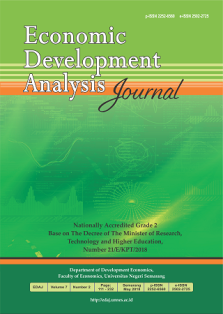Analysis The Use of Electronic Money in Indonesia
Abstract
E-money is an innovation of payment methods. A transaction using electronic money has more advantages than using cash. These advantages make electronic money transactions keep increasing. Currently, the increment of electronic money transactions didn’t follow by a reduction in the amount of money in circulation. This study aims to analyze the effect of macro instruments such as Gross Domestic Product, money supply (M1), inflation, and BI Rate on e-money transactions. This study focuses more on server-based electronic money and cash-substitution capabilities. This research uses quantitative methods using time-series data from January 2009 to December 2019, and the Error Correction Model Engle-Granger was employed. The results of the study show that the GDP variable in a short-run has an insignificant negative effect, while in a long-run has a positive effect, it is also significant on e-money transaction in Indonesia. The M1 variable in the short-run has an insignificant negative effect, while in the long-run, it has a significant negative effect on e-money in Indonesia. Inflation variables in both the short and long-run have an insignificant positive effect on e-money in Indonesia. The variable BI rate in the short and long-run have an insignificant negative effect on e-money in Indonesia.


